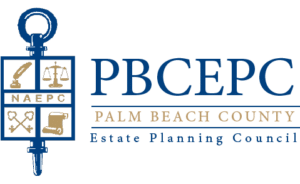
Do you own a life insurance policy that you no longer want or need?
Maybe the premiums are becoming an unwanted expense. Perhaps, like most policies, its performance ebbed & the cost to retain is disquieting, or maybe you simply don’t need the coverage anymore, but are reluctant to throw away years of premium payments in return for nothing. Perhaps your agents were unsuccessful in re-engineering the policy to make it an attractive hold. If you’re considering surrendering, or letting it lapse, then consider your third option: selling your policy in the secondary market via a life settlement transaction.
Many policy owners are unaware that:
- There are billions of dollars of capital in “blind pools” created by hedge funds, private equity firms, and other institutional investment entities seeking life insurance policies.
- Even term policies can be desirable to institutional buyers!
- Since policy payout is based on the insured’s life expectancy and the cost to maintain the policy, life insurance policies are uniquely attractive assets for institutional capital, as these policies are not correlated to other portfolio assets such as stocks, bonds, and real estate.
LISA, the Life Insurance Settlement Association, is a resource for anyone looking to get more in-depth information on the space. While life settlement transactions had a rather “wild west” connotation in decades past, the space is now well established with regulation and best practices designed to protect policy owners from wrongdoing.
Policy owners and insurance advisors should be aware of the two main categories of entities which can facilitate a life settlement transaction: brokers and providers.
A licensed life settlement broker’s duty is to their client, the policy owner, while a licensed life settlement provider’s duty is to the buyer of the policy, the institutional entity looking to acquire the policy. There are pros and cons to working with each, so it is prudent to consult with an experienced licensed life insurance professional on which route will be best to meet the desired outcome.
The sales proceeds received by the policy owner are based on two main factors: the life insurance policy itself, and the life expectancy of the insured(s).
Not all life insurance policies are created equal. The more attractive a policy is from a cost/benefit/duration standpoint, the more it can potentially be worth. Some policies are viewed as good asset due to their guarantees and/or flexibility.
Each institutional buyer has their own buying criteria. While a policy may be extremely desirable by one buyer, it can be seen as undesirable by another. Working with a licensed life insurance professional can help you identify whether the offer you are receiving is a fair one, or not.
Let’s briefly discuss how the insured individual is factored into policy pricing. Since the death benefit payout is based on the mortality of the individual insured(s), all other variables constant, the older the insured is, or the more medical issues and impairments the insured has, the more attractive the secondary market offer will be.
To give some additional insight into how life settlements can be used as part of an overall estate planning strategy, here is a brief synopsis of a transaction involving an individual who owned two life insurance policies for the benefit of his children.
After creating several re-engineering models for the policies, the decision was made to sell the un-loaned policy and use the proceeds to revive & retain the remaining policy with a burgeoning loan.
The policy owners deposited a significant portion of the sales proceeds into the remaining policy creating many benefits:
- The outstanding loan & interest was paid-off in full.
- The face amount of the retained policy increased by the amount of the deposit net of the loan & interest repayment.
- The remaining sales proceeds, net of the loan & interest repayment, deposited into the retained policy will also grow at a contractually guaranteed interest crediting rate of no less than 4.00%.
- If sales proceeds remain in policy, all prospective premiums abate & face amount continues to grow.
The result of this planning and execution assures that premiums cease, forever, and the policy grows in face amount effectively safeguarding the death benefit for payment to the beneficiaries in the future. The strategy also gives the owners access to the policy cash value, tax free, if needed.
There are many options for a life insurance policy that is no longer needed; lapsing or surrendering need not be the only outcomes.
Securities offered through Lion Street Financial, LLC., (LSF) member FINRA & SIPC. Investment advisory services offered through Lion Street Advisors, LLC., a Registered Investment Advisor. Flah & Company and LSF are not affiliated.
Nathan Flah is Principal of Flag & Company. Nathan helps fiduciaries monitor and manage their clients’ insurance policies, ensuring they are up to date as well as discerning re-engineering options and/or new solutions. He oversees strategic alliances, along with implementing new clients’ life insurance portfolios.
John Fricker is an analyst on the Flah & Company team specializing in wealth protection strategies. He brings over a decade of experience developed within unique segments of the financial industry including investment advisory, broker dealer, insurance, and private banking.
